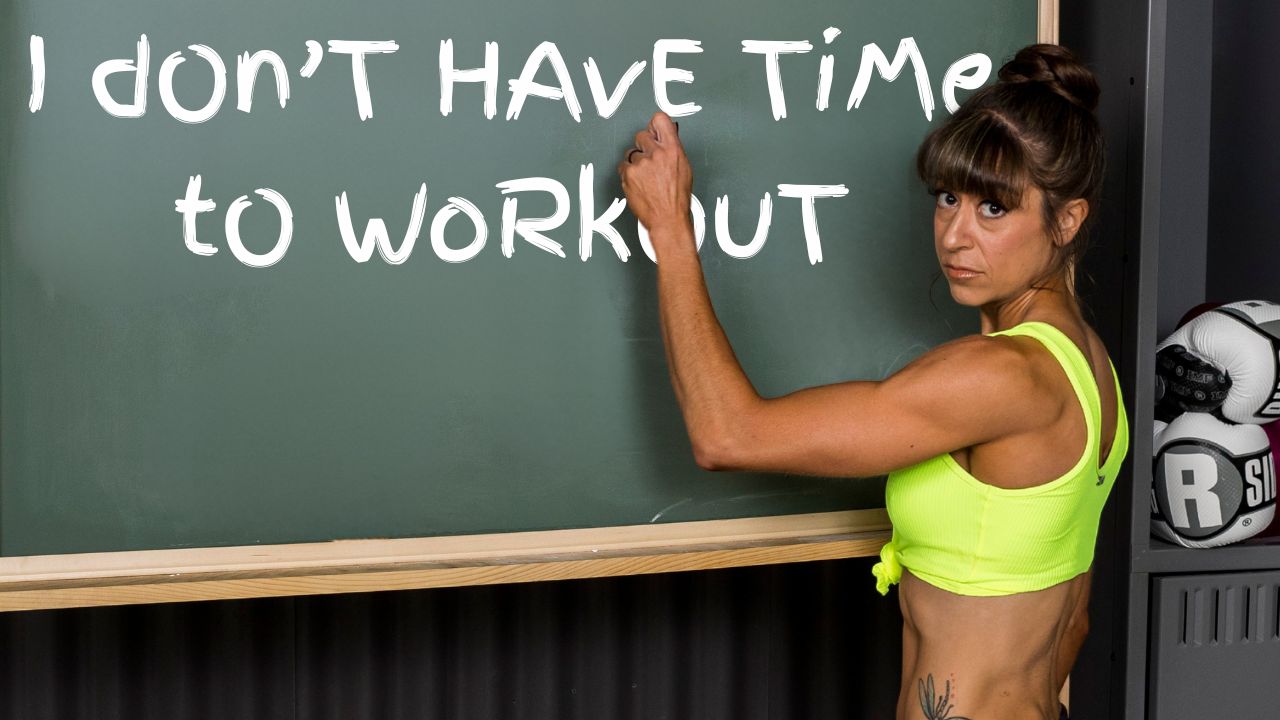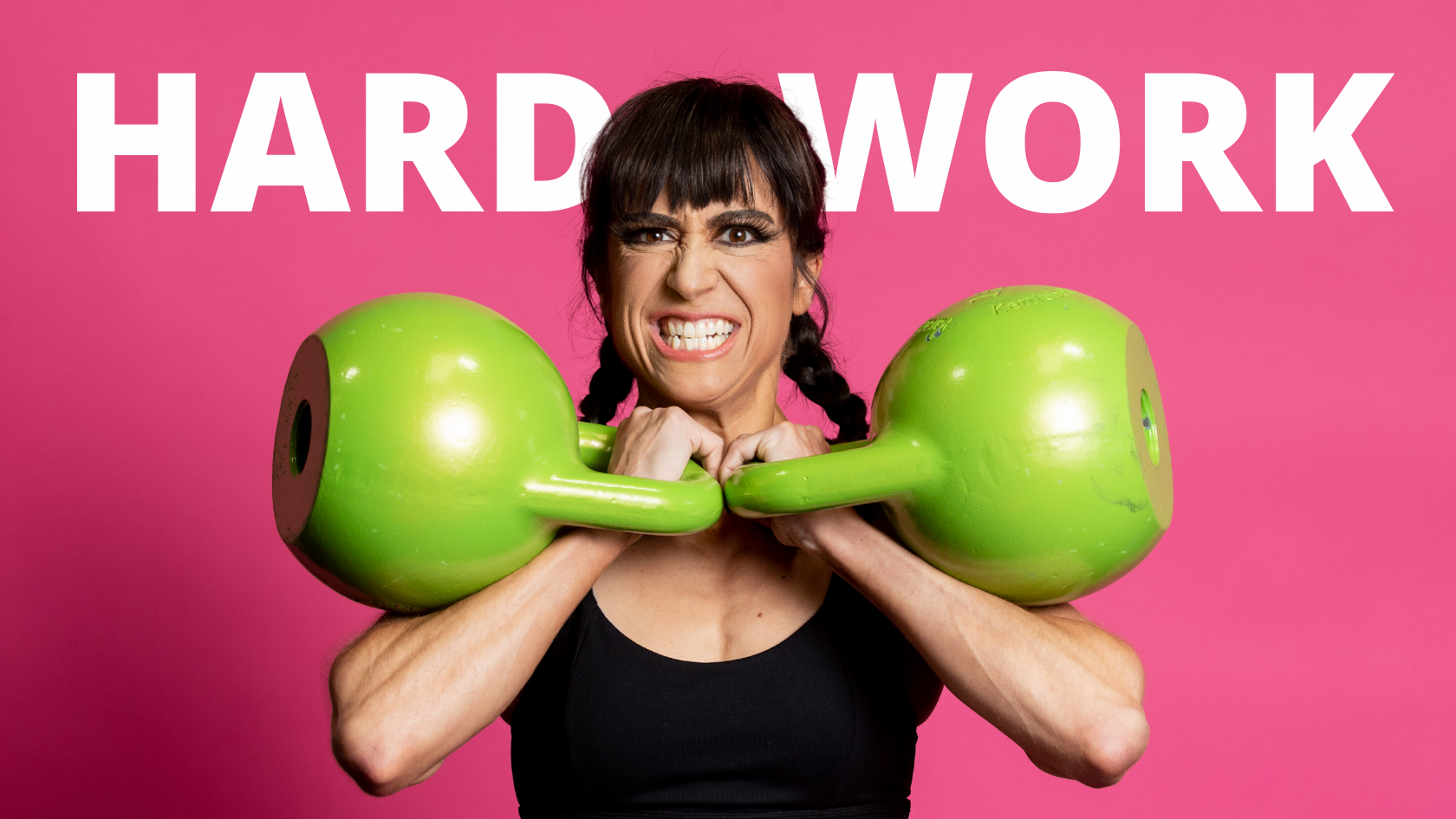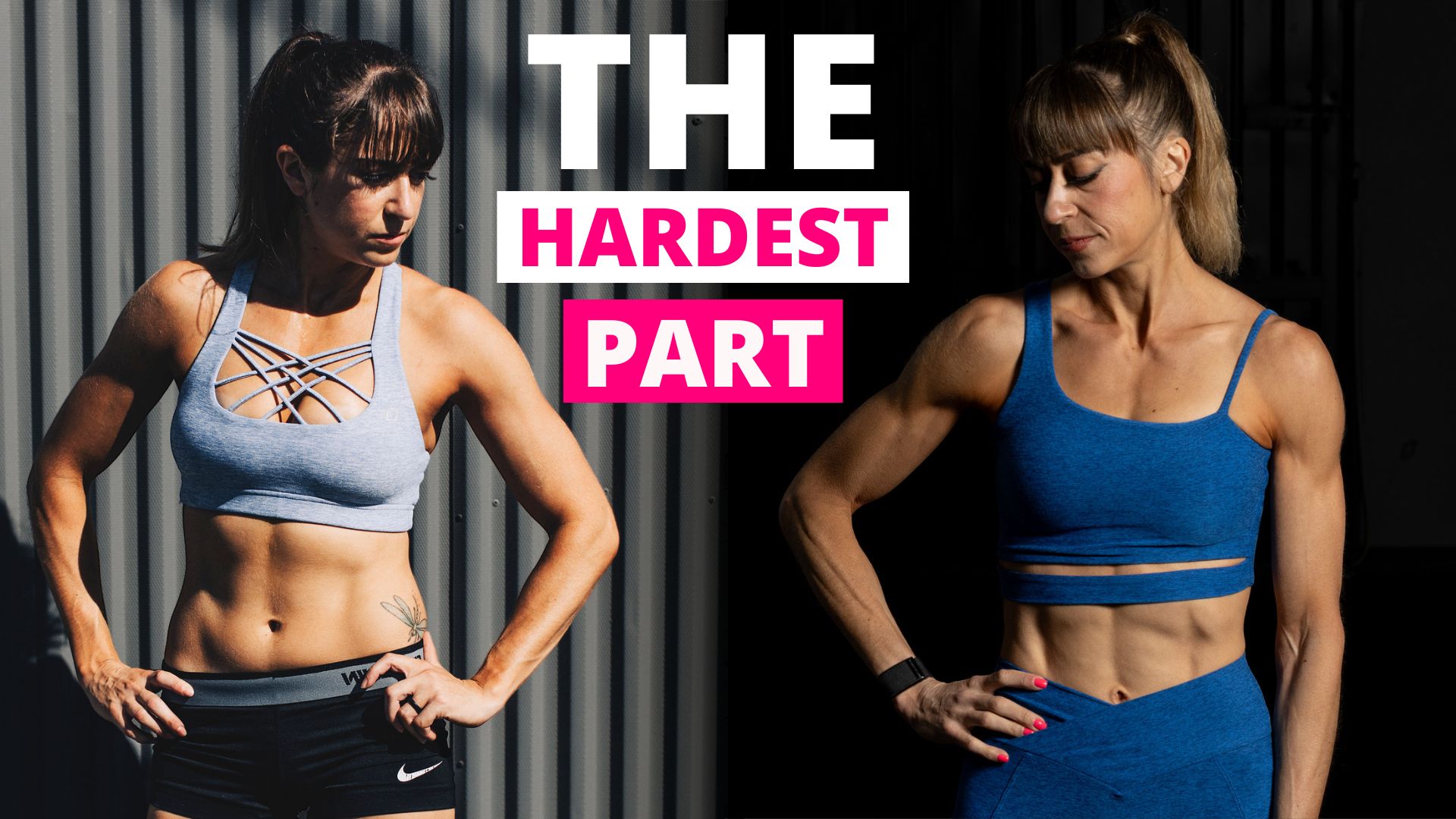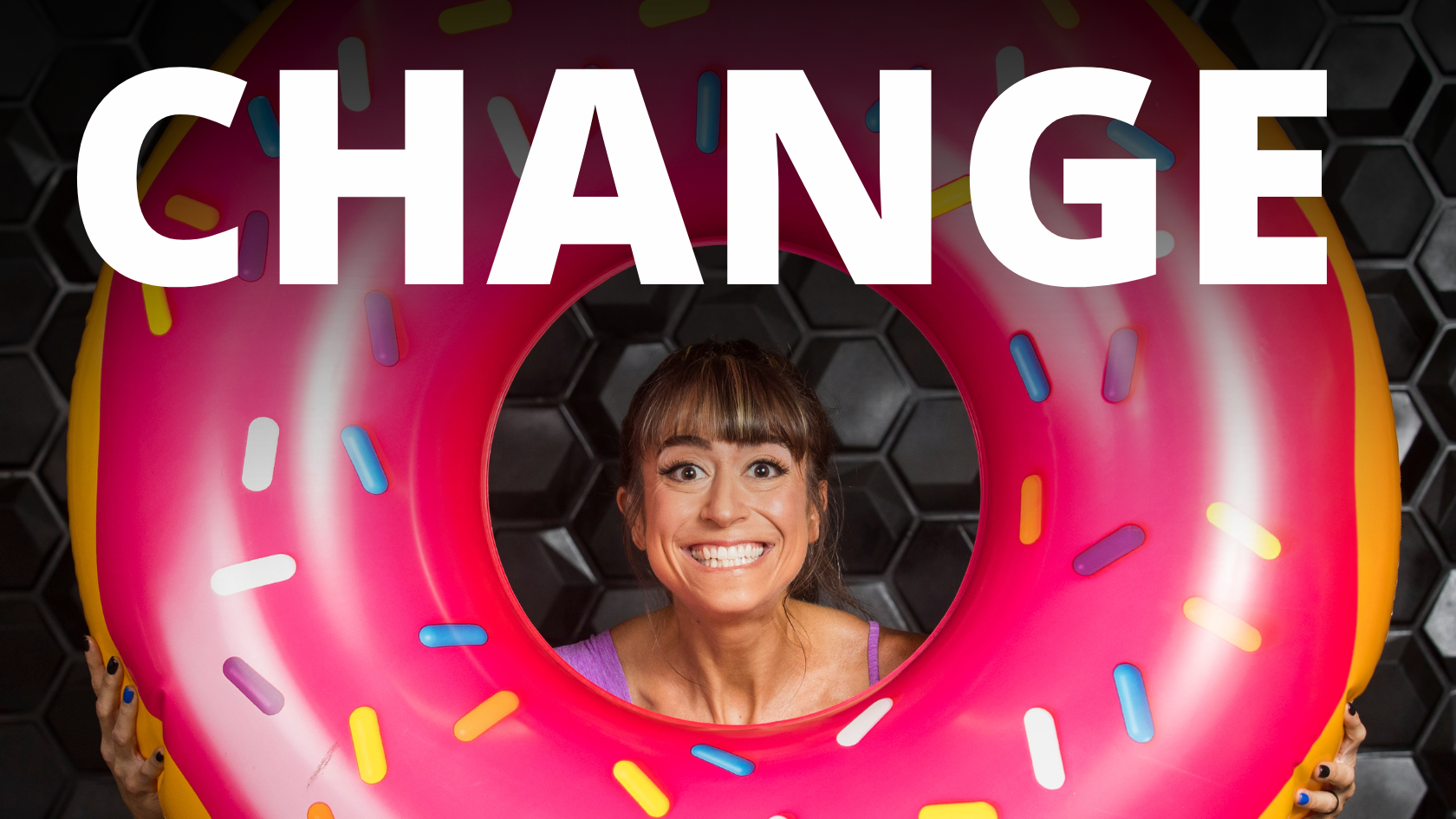
“I Don’t Have Time To Workout”
“I don’t have enough time.”
Sorry I’m calling BS on this one.
And before your storm off clicking back, hear me out…
What we value, we prioritize.
And what we prioritize, we MAKE time for.
We FIND the time.
Yes, there are finite hours in the day, but we give up some of our endless Instagram scrolling.
Or we find a way to still do SOMETHING.
We stop focusing on an ideal and instead focus on what is truly possible where we are at RIGHT NOW.
Because something is better than nothing and 5 minutes pays off.
That’s why I want to share not only 3 tips to help you get that workout momentum building, MAKING the time, but also 3 tips to help you truly design for the time you have.

Because feeling fabulous and moving well doesn’t have to be a full time job!
So first…how can we make the time in our crazy, busy schedules?
And no, the answer isn’t just sleeping less or cutting out things you love to do even if you know they may be…well…time wasters…
Actually the first way to make time for your training is to combine your workouts with some of those mindless activities you love!
Yup.
Tip #1 is…Don’t sacrifice things you enjoy – CONNECT THEM!
Love scrolling Instagram or TikTok? Love bad reality TV shows? Use those as times to go get in a walk. Or do your mobility work. Listen to a podcast as you workout.
Use your workouts oddly as a time to multitask.
Because so often we feel like to fit in the things we know we “should” do, we need to give up things we just want to do to relax.
But we don’t have to.
By connecting these two things, you’re sacrificing something you want to do, but you’re also making potentially the training you don’t want to do something you want to do…and GET to do.
You may make yourself look forward even more to that time for YOU. And the more you value that time, the more you’ll prioritize the habit!
Tip #2: Use stolen moments. Take movement snack breaks.
Sure maybe a 30, 40 or even hour long session is “ideal.” But if that’s not possible and is mentally stopping you from starting anything, realize you don’t need it.
Use the moments you have.
5 minutes in between meetings, do a couple of stretches and a loop around your office.
Need to get up to get more water? Do 10 bodyweight squats.
Yes, we want progression to our workouts and a clear plan in place as much as possible for the fastest results, but even small actions beat a perfect plan…
Because so often we use not being able to do the ideal as an excuse to do nothing. And no action means no progress.
Not to mention, action creates more momentum and more action.
When you feel positive and good about the habits you are doing, you want to do more of them.
And even 5 minutes throughout the day can add up and add up fast.
Consider even accounting for those stolen moments to have a plan for different lengths so you can create some clear guidelines to help yourself build.
Start even setting an alarm or calendar event to get you in the habit of doing 5 minutes.
Because 5 minutes becomes 15 becomes 30 becomes forward momentum that makes you want to prioritize the habit more and more.
And suddenly, you find there is more time than you realized in your day because you’re not faced with the daunting task of setting aside an hour all at once!
Then Tip #3: Focus on frequency first.
We get good at what we consistently do. The more we have that set time daily that we workout at, the easier it is to get in the groove and habit.
This may sound counterintuitive BUT…
It may be better to do 10-15 minutes a day to start over trying to do an hour 3 times a week.
And it’s all because of the groove and habit it gets us into.
With the short daily sessions, you can have a clear pattern you create and a shift in your environment. The repetition daily for a few weeks can build that consistency to create that discipline.
From there, you can adjust maybe two or three sessions to be longer and even shift some of the shorter ones to just be recovery.
But more of less to start may be the key to helping that momentum snowball.
Now that you’ve made the time, you have to design for the time you have so your training sessions are as effective as possible.
Because often we feel like 5-10 minutes can’t pay off. But it can, if used strategically.
Here are 3 tips to maximize those minutes…
Tip #1: Set a timer.
When we don’t have clarity on how long something will take, we may skip it when we have a hard stop time or deadline. By creating timed routines, you know you’ll get everything in.
That clarity creates comfort.
If you have 5 minutes, set a timer for 5 minutes with 3 moves you cycle through during that time. Then you’re done.
If you have a minute, do a minute of foam rolling or stretching even. Heck a minute of burpees will destroy you.
If you have 15 minutes, create a circuit of 5 moves you do for 1 minute each and repeat the series 3 times.
So many ways to use that timer to help you be efficient.
And not only will you know you’ll be able to get in the workout you’ve designed, but having that set timeframe can help you strategically include moves and reps and sets to your advantage.
It can help you pick exercises that will really challenge you. It can help you decide which muscles to work to make the most of every second.
It gives you a focus for the session to optimize it.
Then Tip #2: Use compound moves.
Work more muscle groups in a shorter amount of time to build more muscle while burning more calories.
Compound moves are multi-joint movements that work multiple muscle groups at once. These are more efficient than isolation exercises that work only a single muscle at a time, making them better to help you work your entire body when time is an issue.
You can also move heavier loads with compound moves which can help you build strength and muscle more efficiently.
When designing your workouts focus on exercises like squats, deadlifts, lunges, push ups, pull ups, bench press, rows over bicep curls or leg extensions.
And then cycle the areas worked over your workouts to avoid having to rest so you can get the most work done in the shortest amount of time.
While rest is key to us being able to work at a higher intensity in our training, we can use active rest to our advantage when we’re short on time.
To allow one muscle to rest as another works, make your workouts more full body and alternate moves for different muscle groups.
In your circuit, think squat, push up and row as your 3 moves over squat, lunge, step up.
The second never gives your legs a chance to rest so you’ll see your intensity dip as you even have to modify or lighten loads whereas your legs get rest in the first during push ups and rows.
And Tip #3: Don’t work to failure.
While it is tempting to try to max out the reps on a move each round, this can cause you to actually have to slow down and rest more or modify moves to keep moving.
Instead stop a few reps short of having to rest and move on to the next exercise. This can lead to you being able to push harder for each rep you do and make the work you do more quality.
It can help you even do more reps over the 5 minutes you have over having to pause because you’re tired, slowing you down.
You can also often lift heavier by keeping the reps lower. Over the 5-10 minutes, 5 reps at a time can really add up to more weight lifted than if you went lighter to be able to do 10 reps!
The key is strategically designing for the time we have over focusing on an ideal.
And all of this starts with owning that we can’t change how many hours in the day we have, but we can find ways to shift our priorities to MAKE the time to see the results we want!
For workouts you can do anywhere, and that will fit your crazy busy schedule, check out my Dynamic Strength program:
–> LEARN MORE









